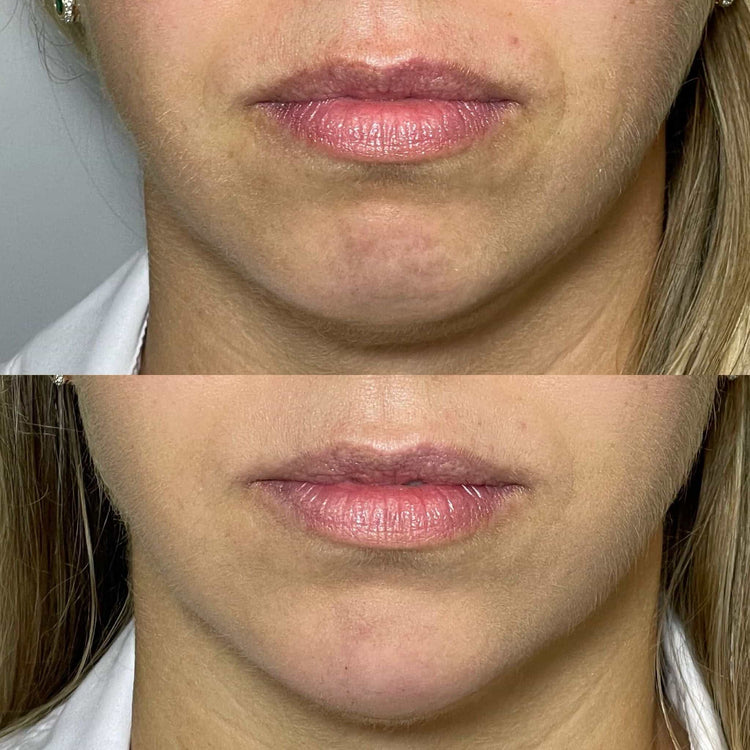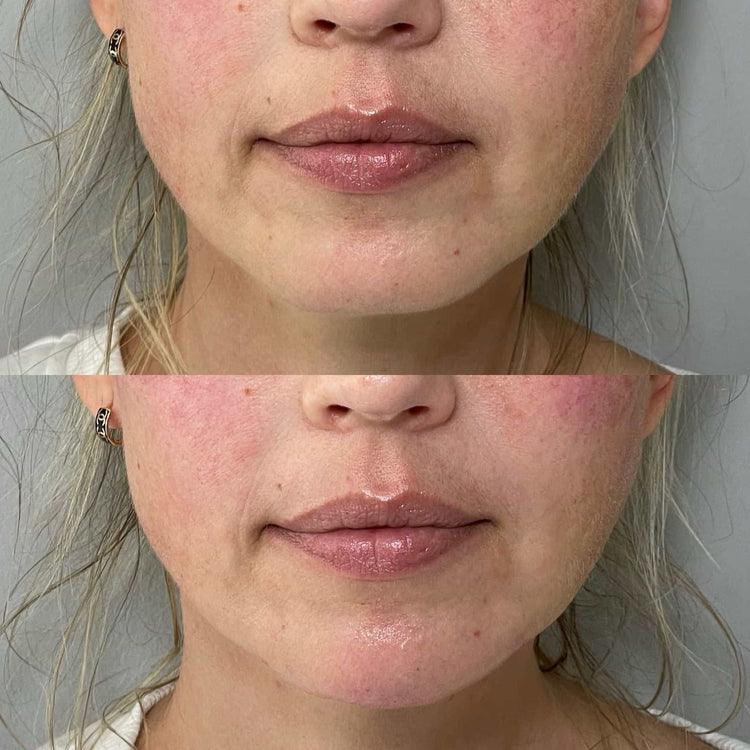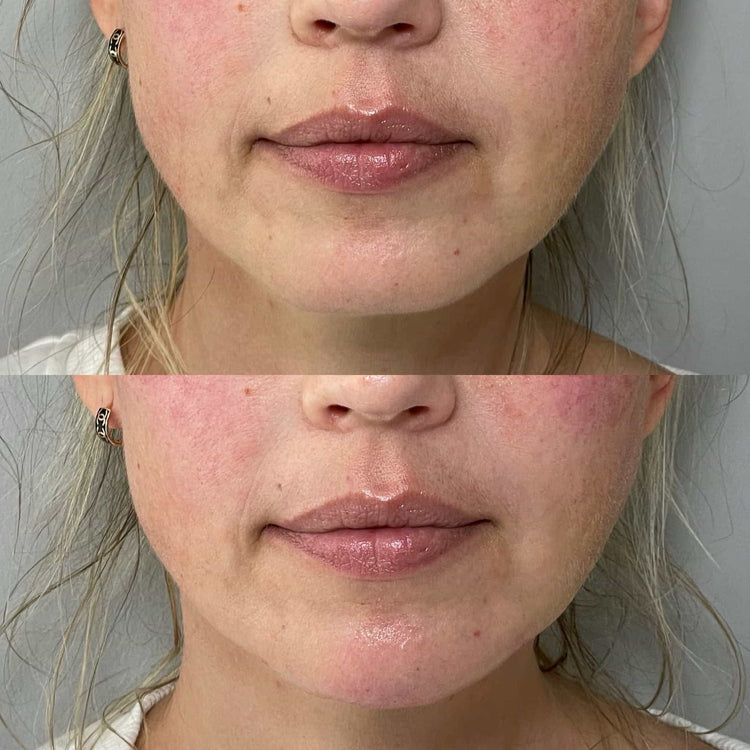Benefits of Labiomental Crease Fillers on Skin Texture

The labiomental crease, that vertical line running from the bottom of the lip to the chin, can be a telltale sign of aging and loss of volume. Dermal fillers offer a way to address this concern and potentially enhance overall skin texture in the process. By strategically injecting hyaluronic acid fillers into the labiomental crease, practitioners can smooth out wrinkles and restore lost fullness, contributing to a more youthful and refined appearance.
Improved Facial Symmetry and Harmony
Labiomental crease fillers can significantly improve facial symmetry and harmony by addressing volume loss in this specific area. When the labiomental crease becomes prominent, it can create an imbalance in facial proportions, making the face appear less symmetrical. By filling out the crease, fillers restore a smoother transition between the lip and chin, leading to a more balanced and aesthetically pleasing appearance.
In addition to symmetry, the smoothing effect of these fillers can enhance skin texture. The labiomental crease often deepens with age, accentuating existing wrinkles and fine lines. By plumping up this area, fillers can minimize the appearance of these wrinkles, leading to a more refined and youthful complexion.
Reduced Appearance of Fine Lines and Wrinkles
Dermal fillers strategically injected into the labiomental crease can significantly improve skin texture by minimizing the appearance of fine lines and wrinkles. The hyaluronic acid in these fillers plumps up the area, smoothing out the vertical line that often deepens with age.
This plumping effect helps to blur the visibility of existing wrinkles, creating a more refined and youthful complexion. By addressing volume loss in this specific area, labiomental crease fillers contribute to an overall improvement in facial harmony and symmetry.
Enhanced Lip Definition and Volume
The labiomental crease, that vertical line running from the bottom lip to the chin, can become more prominent with age due to loss of volume. This prominence can make the face appear less symmetrical and can accentuate wrinkles in the area.
Dermal fillers, typically hyaluronic acid-based, can be injected into the labiomental crease to restore volume and smooth out the appearance of this wrinkle.
By plumping up the area, these fillers minimize the visibility of fine lines and wrinkles, contributing to a more youthful and refined complexion.
The smoother transition between the lip and chin also enhances facial symmetry, creating a more balanced and aesthetically pleasing appearance.
Smoother Transition Between Lips and Chin
Labiomental crease fillers can significantly improve skin texture by minimizing the appearance of fine lines and wrinkles. The hyaluronic acid in these fillers plumps up the area, smoothing out the vertical line that often deepens with age.
This plumping effect helps to blur the visibility of existing wrinkles, creating a more refined and youthful complexion.
Procedure and Considerations
The labiomental crease, that vertical line extending from the bottom lip to the chin, is a common area of concern as we age. Loss of volume in this region can contribute to an imbalance in facial proportions and accentuate the appearance of wrinkles. Dermal fillers offer a solution to address these concerns by restoring volume and smoothing the skin texture.
Injection Technique and Placement
The injection technique for labiomental crease fillers involves careful placement to ensure optimal results. Practitioners typically utilize a fine needle or cannula to deposit the filler strategically along the crease, following its natural contours. The goal is to create a smooth, even distribution of product that restores volume and minimizes the appearance of wrinkles.
Considerations for injection technique include the patient’s facial anatomy, desired outcome, and any existing skin irregularities. Experienced practitioners will assess these factors to determine the appropriate filler type, dosage, and injection sites.
Placement is crucial for achieving a natural-looking result. Overfilling can lead to an unnatural appearance or distort facial contours, while underfilling may not effectively address the desired volume loss. Practitioners must strike a balance to ensure that the filler enhances the patient’s features without creating any adverse effects.
Types of Fillers Suitable for Labiomental Crease
The choice of filler depends on factors such as the individual’s skin type, the severity of the labiomental crease, and desired outcome. Hyaluronic acid-based fillers are commonly used due to their biocompatibility, ability to attract and retain water, and reversible nature.
Different hyaluronic acid formulations offer varying degrees of viscosity and longevity. For shallower creases, a lighter filler may suffice, while deeper creases may require a more volumizing product with longer-lasting results.
Other types of fillers, such as poly-L-lactic acid (PLLA), can also be considered for labiomental crease augmentation. PLLA stimulates collagen production over time, providing long-lasting volume restoration.
Expected Results and Duration
The procedure involves the strategic injection of dermal fillers, typically hyaluronic acid-based, into the labiomental crease. A fine needle or cannula is used to deposit the filler along the crease, following its natural contours.
Expected results include a smoothing of wrinkles, restoration of lost volume, and an overall enhancement in skin texture. The treatment can also improve facial symmetry by creating a smoother transition between the lip and chin. The duration of results varies depending on the type of filler used and individual factors. Hyaluronic acid fillers typically last for several months to a year, while PLLA fillers can provide long-lasting results for up to two years or more.
Potential Risks and Side Effects
The procedure involves strategic injections of dermal fillers, usually hyaluronic acid-based, into the labiomental crease using a fine needle or cannula. The filler is carefully deposited along the crease, following its natural contours to restore volume and smooth out wrinkles.
Potential risks and side effects associated with labiomental crease fillers are generally mild and temporary. They may include bruising, swelling, redness, tenderness, and discomfort at the injection site. These side effects usually subside within a few days to weeks.
More serious but less common complications can occur, such as infection, allergic reaction, or filler migration. It is essential to consult with a qualified and experienced practitioner who will assess your individual medical history and provide appropriate guidance.
Careful consideration should be given to the patient’s anatomy, desired outcome, and any pre-existing skin conditions before undergoing labiomental crease filler treatment.
Patient Selection and Consultation
Choosing the right patient for labiomental crease fillers involves considering individual factors such as skin type, wrinkle severity, and desired aesthetic goals. Consultation with a qualified practitioner is crucial to determine suitability for treatment and discuss potential risks and benefits.
Identifying Ideal Candidates for Treatment
Patient selection for labiomental crease filler treatment should consider several factors.
Firstly, individuals with mild to moderate volume loss in the labiomental crease are typically good candidates. Those with severe volume depletion might require more extensive procedures or a combination of treatments.

Skin type also plays a role; patients with thinner skin may be more prone to bruising or visible filler, while those with thicker skin may see better results.
Additionally, pre-existing skin conditions like active acne or infections should be addressed before treatment.

A thorough consultation with a qualified practitioner is essential. During this consultation, the practitioner will assess the patient’s facial anatomy, discuss their desired outcome, review medical history and any medications being taken, and address any concerns they may have.
Assessing Patient Expectations and Goals
Patient selection for labiomental crease fillers involves carefully considering several factors to ensure optimal results and minimize potential risks.
Firstly, the severity of the labiomental crease is assessed. Patients with mild to moderate volume loss are typically good candidates. Those with severe depletion may require more extensive procedures or a combination of treatments.
Skin type also plays a role. Patients with thinner skin may be more prone to bruising or visible filler, while those with thicker skin might see better results.
Pre-existing skin conditions like active acne or infections should be addressed before treatment as they can complicate the procedure or hinder healing.
A thorough consultation is essential. During this process, the practitioner will discuss the patient’s aesthetic goals, review their medical history, and address any concerns they may have. This open communication ensures that both patient and practitioner are on the same page regarding expectations and potential outcomes.
Consultation Process and Comprehensive Evaluation
The labiomental crease, that vertical line running from the bottom lip to the chin, can become more prominent with age due to loss of volume. This prominence can make the face appear less symmetrical and can accentuate wrinkles in the area.
Dermal fillers, typically hyaluronic acid-based, can be injected into the labiomental crease to restore volume and smooth out the appearance of this wrinkle.
By plumping up the area, these fillers minimize the visibility of fine lines and wrinkles, contributing to a more youthful and refined complexion.
The smoother transition between the lip and chin also enhances facial symmetry, creating a more balanced and aesthetically pleasing appearance.
Labiomental crease fillers can significantly improve skin texture by minimizing the appearance of fine lines and wrinkles. The hyaluronic acid in these fillers plumps up the area, smoothing out the vertical line that often deepens with age.
This plumping effect helps to blur the visibility of existing wrinkles, creating a more refined and youthful complexion.
The labiomental crease, that vertical line extending from the bottom lip to the chin, is a common area of concern as we age. Loss of volume in this region can contribute to an imbalance in facial proportions and accentuate the appearance of wrinkles. Dermal fillers offer a solution to address these concerns by restoring volume and smoothing the skin texture.
The injection technique for labiomental crease fillers involves careful placement to ensure optimal results. Practitioners typically utilize a fine needle or cannula to deposit the filler strategically along the crease, following its natural contours. The goal is to create a smooth, even distribution of product that restores volume and minimizes the appearance of wrinkles.
Considerations for injection technique include the patient’s facial anatomy, desired outcome, and any existing skin irregularities. Experienced practitioners will assess these factors to determine the appropriate filler type, dosage, and injection sites.
Placement is crucial for achieving a natural-looking result. Overfilling can lead to an unnatural appearance or distort facial contours, while underfilling may not effectively address the desired volume loss. Practitioners must strike a balance to ensure that the filler enhances the patient’s features without creating any adverse effects.
The choice of filler depends on factors such as the individual’s skin type, the severity of the labiomental crease, and desired outcome. Hyaluronic acid-based fillers are commonly used due to their biocompatibility, ability to attract and retain water, and reversible nature.
Different hyaluronic acid formulations offer varying degrees of viscosity and longevity. For shallower creases, a lighter filler may suffice, while deeper creases may require a more volumizing product with longer-lasting results.
Other types of fillers, such as poly-L-lactic acid (PLLA), can also be considered for labiomental crease augmentation. PLLA stimulates collagen production over time, providing long-lasting volume restoration.
The procedure involves the strategic injection of dermal fillers, typically hyaluronic acid-based, into the labiomental crease. A fine needle or cannula is used to deposit the filler along the crease, following its natural contours.
Expected results include a smoothing of wrinkles, restoration of lost volume, and an overall enhancement in skin texture. The treatment can also improve facial symmetry by creating a smoother transition between the lip and chin. The duration of results varies depending on the type of filler used and individual factors. Hyaluronic acid fillers typically last for several months to a year, while PLLA fillers can provide long-lasting results for up to two years or more.
The procedure involves strategic injections of dermal fillers, usually hyaluronic acid-based, into the labiomental crease using a fine needle or cannula. The filler is carefully deposited along the crease, following its natural contours to restore volume and smooth out wrinkles.
Potential risks and side effects associated with labiomental crease fillers are generally mild and temporary. They may include bruising, swelling, redness, tenderness, and discomfort at the injection site. These side effects usually subside within a few days to weeks.
More serious but less common complications can occur, such as infection, allergic reaction, or filler migration. It is essential to consult with a qualified and experienced practitioner who will assess your individual medical history and provide appropriate guidance.
Careful consideration should be given to the patient’s anatomy, desired outcome, and any pre-existing skin conditions before undergoing labiomental crease filler treatment.
Choosing the right patient for labiomental crease fillers involves considering individual factors such as skin type, wrinkle severity, and desired aesthetic goals. Consultation with a qualified practitioner is crucial to determine suitability for treatment and discuss potential risks and benefits.
Patient selection for labiomental crease filler treatment should consider several factors.
- Firstly, individuals with mild to moderate volume loss in the labiomental crease are typically good candidates.
- Those with severe volume depletion might require more extensive procedures or a combination of treatments.
- Skin type also plays a role; patients with thinner skin may be more prone to bruising or visible filler, while those with thicker skin may see better results.
- Additionally, pre-existing skin conditions like active acne or infections should be addressed before treatment.
A thorough consultation with a qualified practitioner is essential. During this consultation, the practitioner will assess the patient’s facial anatomy, discuss their desired outcome, review medical history and any medications being taken, and address any concerns they may have.
Patient selection for labiomental crease fillers involves carefully considering several factors to ensure optimal results and minimize potential risks.
Firstly, the severity of the labiomental crease is assessed. Patients with mild to moderate volume loss are typically good candidates. Those with severe depletion may require more extensive procedures or a combination of treatments.
Skin type also plays a role. Patients with thinner skin may be more prone to bruising or visible filler, while those with thicker skin might see better results.
Pre-existing skin conditions like active acne or infections should be addressed before treatment as they can complicate the procedure or hinder healing.
A thorough consultation is essential. During this process, the practitioner will discuss the patient’s aesthetic goals, review their medical history, and address any concerns they may have. This open communication ensures that both patient and practitioner are on the same page regarding expectations and potential outcomes.
- THC Beverages Vs Traditional Edibles: A Complete Comparison - May 10, 2025
- How Long After Lip Filler Can You Give Oral - May 10, 2025
- Does THC Seltzer Work Faster Than Gummies? - May 9, 2025
